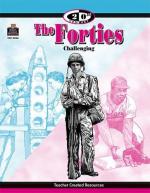|
This section contains 192 words (approx. 1 page at 300 words per page) |

|
In 1944 Who Shall be Educated?, by W. L. Warner, R. J. Havinghurst, and M. B. Loeb, reported research done at schools in the Midwest, the South, and New England to prove that middle-class white children did better in school because tests were biased in their favor; the solution, they suggested, was for teachers to increase their efforts to make the classroom more democratic and offer greater opportunities for social mobility.
Stereotyping.
Later, Allison Davis's Social Class Influence upon Learning (1949) documented the stages by which elementary students became aware of social class. Her argument was that teachers and schools tended to reinforce the beliefs and habits of the white middle class to the exclusion of other cultural attitudes. Thus educators were blamed for the high failure rate of black and/or lower-class students. Davis found that the educational system tended to increase stereotyping, but she...
|
This section contains 192 words (approx. 1 page at 300 words per page) |

|




